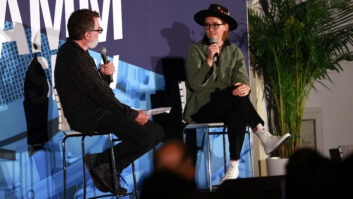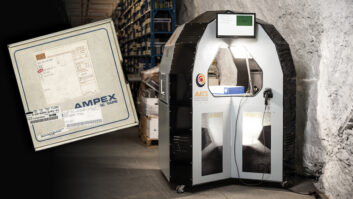We get up in the morning, make coffee, head to work, come home, eat dinner, watch TV and go to bed. Routine. It reminds me of folks who start up a business and believe they will see success simply because they have opened their doors.
You have to always ask yourself: What makes you and your business unique? What will attract someone to your world instead of your competition? After all, you’re asking someone to break their own routine. To attract a customer, you have to offer either the same quality for less money or higher quality for the same price. Given today’s competitive market, this is not easy, particularly if you want to stay in business.
The first training I had when I was hired at Lauzon Sound in Ottawa emphasized selling the sizzle, not the steak. Lauzon had two departments: pianos and high-tech. Although I was hired for the high-tech department, my training began with learning how to sell a Steinway grand piano. Then they took me though the process of creating a multipage presentation with letters, pricing and, of course, data sheets. Using this technique in the next months, I sold sound systems to churches, nightclubs and arenas. I was so successful that some years later I was offered half the store to come back. By then I was working for Fender Canada as product manager, however, and was on another career path.
Related: The Aha Moment: Selection to Become a Destination, by Peter Janis, Jan. 3, 2019
At that time, Fender had decided that it wanted to be in the P.A. business, so it went to Matsushita in Japan to have a range of microphones, mixers and speaker cabinets produced. As Fender is Fender, I could see that selling P.A. systems would be a challenge no matter how good the product. Instead of merely trying to sell Fender against the established brands, I arranged demos in nightclubs in both Vancouver and Toronto where I brought in the top band in town to perform in a club using a Fender P.A., and then invited dealers and sound engineers to listen.
In Vancouver, I hired a band called Science that did a better job at Toto than Toto. In Toronto, I hired The Lincolns, the top R&B band in the country. In both cases, the bands were so good that they could have played through a pair of 1970s Shure Vocalmasters and convinced the crowd of the quality. We then offered extended terms to the dealers to carry the product—and next thing you know, we were sold out. We were so successful that we ended up selling 50 percent of the product allocated to North America in Canada alone. The Aha Moment was clear: It is not just about the product; it’s about the excitement you bring along with it.
Another story follows the same path. CBS, which owned Fender at the time, wanted to get out of the guitar business, so Fender’s president, Bill Shultz, and a group of distributors arranged a leveraged buyout to acquire the company in 1985. To accomplish this, they cut North American guitar production to almost zero and contracted a Japanese guitar manufacturer to build for them. Kramer was the top selling brand at the time due to Eddie Van Halen’s meteoric ascent. One day I got a call from Lauzon’s vice president of sales, asking me to see him in his office. He had just received three guitars from Fender: the first had a single humbucker, the second had two humbuckers and the third had two single coils and a humbucker. All of these had locking tremolo systems, were painted in pastel colors and had a flashy Strat logo emblazoned on the headstock. They were obviously made to chase Kramer’s success. When my boss asked how many we should order, I told him: “None. Fender is not a heavy metal guitar company; we are Clapton, Hendrix, Jeff Beck … not Van Halen.” An hour later he called me back to his office and said we had to buy 600 units, so I told him, “OK, buy 150 of the first two and 300 of the third. I’ll figure it out.”
Want more stories like this? Subscribe to our newsletter and get it delivered right to your inbox.
I conjured up a plan to offer an embroidered jean jacket with the guitars as a promotional stunt. I contacted Lee, Canadian denim clothing company GWG and Levi’s and eventually was able to put a deal together to buy the jackets directly from Lee. I had the back embroidered with the Strat logo and the front with a small Fender logo. I then called our Canadian sales team members in for a meeting where I showed them the guitars and the jean jackets. To no surprise, the jackets got all the attention. I then told them to visit dealers wearing the jean jacket and say nothing about the guitars. Have a coffee and a chat. Watch what happens. Once the dealers saw the jacket, it was no longer a matter of what guitars they had to buy; they wanted the jackets for themselves and their staff. We sold out within a few weeks. Keep in mind that Canada has one-tenth the population of the United States, so this would be akin to selling 6,000 guitars in two weeks.
The Aha Moment: Sometimes it is not the product, but the sizzle that creates the sale.







